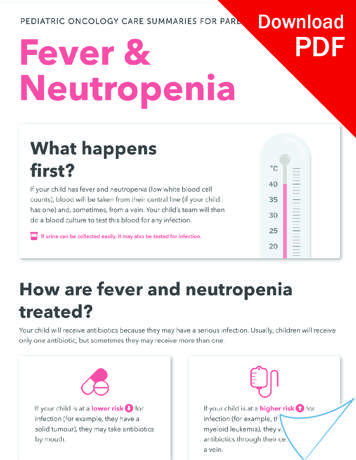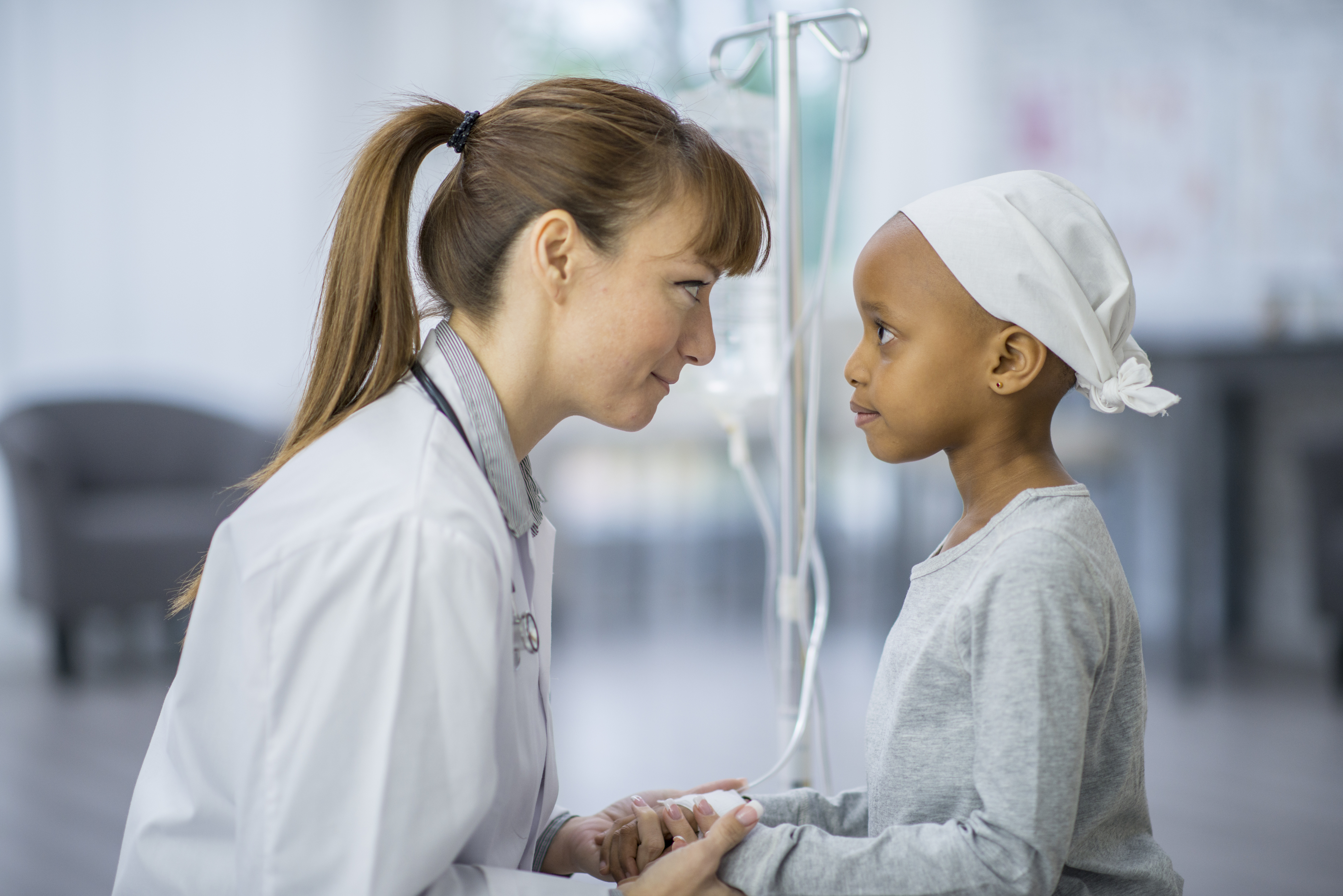Once your child is diagnosed with acute leukemia doctors will start your child on chemotherapy as soon as possible.
Chemotherapy uses drugs to destroy leukemic cells. These drugs are also called anticancer drugs or chemotherapeutic agents.
Generally, children tolerate chemotherapy better than adults. They can usually carry on their normal activities.
How is chemotherapy given?
There are several different ways to give chemotherapy. This depends on the type of leukemia, and on the medicine your child is taking.
Your child’s doctor prescribes chemotherapy drugs according to a schedule or timetable for each cycle or phase. The doctor may refer to this as the “protocol.” Protocols are specific to the leukemia and subtype.
Routes of administration
There are various ways your child’s treatment team can give your child chemotherapy. These include:
- Intravenous (IV): This is the most common way to give chemotherapy. The drugs are delivered through a needle directly into a vein. A port or central line may be used.
- Orally: when a capsule or liquid preparation is swallowed by mouth.
- Intramuscular (IM): chemotherapy is injected into a muscle (in children, this is usually the thigh muscle).
- Intrathecal (IT): medicines are given via a lumbar puncture into your child’s spinal column. This is used to treat leukemic cells in the fluid that surrounds the brain and spine.
Central nervous system (CNS) directed chemotherapy
Leukemic cells can also cross into the fluid that surrounds the central nervous system (CNS) organs, brain and spine. This fluid is called the cerebral spinal fluid (CSF). As a result, leukemic cells can also enter your child’s CNS. At diagnosis, doctors look to see whether they have leukemia cells in their spinal fluid.
- If they have leukemia cells in their spinal fluid, your child is CNS positive. They will then need CNS-direct therapy and cranial (brain) radiation.
- If they do not have leukemia cells in their spinal fluid, your child is CNS negative. However, leukemia cells can still hide in the CNS even if doctors cannot detect them. For this reason, your child receives a less intense CNS-directed therapy.
To treat leukemic cells in the CNS, doctors do a lumbar puncture to deliver chemotherapy through the CSF.
Short-term side effects of chemotherapy
Some medicines have unwanted effects on the body. These are called side effects. The side effects from chemotherapy drugs depend on the type of drugs, the dose of drug and your child’s reaction. Some children may not have any side effects.
Kidney problems
Chemotherapy medicines can destroy leukemic cells at a rapid rate, sometimes causing them to release substances called uric acid, potassium and phosphate into the blood. This is known as tumour lysis syndrome. High levels of uric acid can be toxic to the kidneys. If untreated, this can potentially lead to kidney failure. The kidney function can be temporarily replaced by a special machine, called dialysis.
To protect against the potential effects of tumour lysis syndrome, doctors will give your child medicines called allopurinol or rasbirucase.
Bleeding and infection
Chemotherapy medicines can also make it difficult for the bone marrow to produce normal blood cells. If this happens, your child becomes prone to infections, bleeding and developing anemia. Children who receive a more intense treatment are at a greater risk of developing these side effects. To protect against these possible risks, your child’s treatment team will provide the necessary supportive care, such as:
- antibiotics
- antifungal drugs
- red blood cell and platelet transfusions
Fever

Treatment can also cause fever in children. Sometimes, this fever is associated with a decrease in white blood cells which causes a condition called neutropenia, in which the immune system is weakened. This makes a child prone to bacterial infection.
If your child develops a fever with neutropenia during treatment, they need to go to the hospital immediately to receive intravenous antibiotics.
For a fever and neutropenia care summary for teens, click here.
For a fever and neutropenia care summary for kids, click here.
Other side effects during chemotherapy
While on chemotherapy, your child may experience:
- nausea or vomiting. Medications like ondansetron, ganisetron, dimenhydrinate or lorazepam can usually help
- fatigue
- headaches
- loss of appetite
- sore mouth or throat (mucositis)
- diarrhea or constipation
- taste changes
- pain and damage to the ends of nerves in hands, feet, or jaw (neuropathy). These side effects are often caused by the chemotherapy medicine vincristine
- hearing loss
- hair loss
- an allergic reaction. This is rare, but when it does occur, it is usually due to the chemotherapy medicine asparaginase. To stop the reaction right away, doctors give an anti-allergy medicine.
- seizures, rarely
- blood clots (thrombosis), rarely
Other considerations during chemotherapy
Using antibiotics while on chemotherapy
Chemotherapy weakens your child’s immune system, making them prone to infection. When this happens, your child may develop a specific type of pneumonia, called pneumocystis pneumonia (PCP). It is caused by the fungal organism Pneumocystis jiroveci. This fungus is normally present on our lungs, but it does not cause any disease in healthy people because their immune systems are functioning well.
To prevent your child from becoming infected, the doctor gives them an antibiotic called co-trimoxazole or Septra®. It is usually given orally in a tablet or liquid form, once or twice a day, three days a week throughout treatment. Your child continues to take the medicine for 3 months after they finish treatment.
Septra® is currently the best way to protect against PCP. However, some children cannot tolerate Septra® very well. If your child experiences side effects or allergies to the medicine, they can take one of the following:
- dapsone, which is taken by mouth
- pentamidine, which is either inhaled or given by IV
Monitoring while your child is on chemotherapy
While your child receives chemotherapy, they have regular checkups. Your child’s doctor will do a physical exam and check their complete blood count (CBC). Sometimes, your child’s blood will be taken to check that their liver and kidneys are working well.
